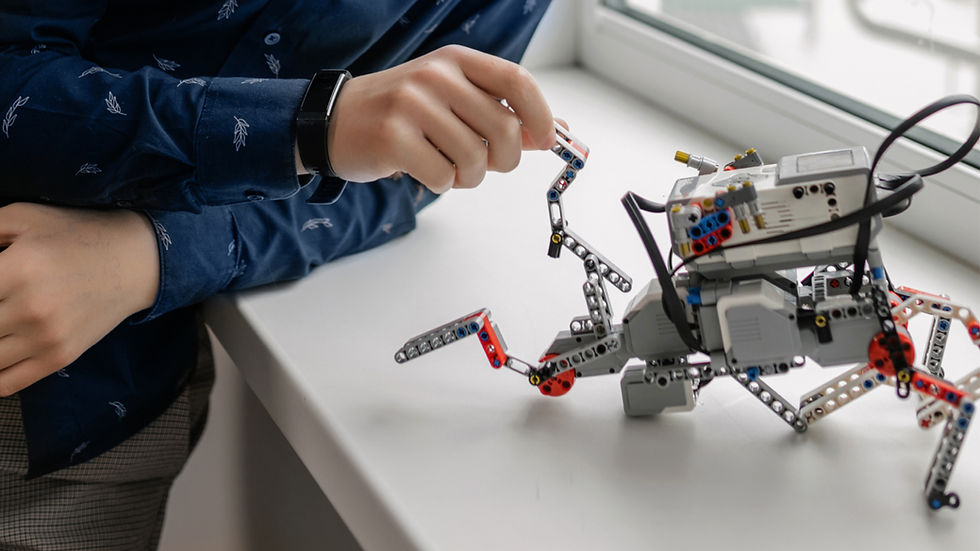Why Robotics is Essential for STEM Education
- Pranil Kanderi
- Nov 24, 2023
- 3 min read
Updated: Jan 25, 2024
Robotics has become an essential component of STEM education, and for good reason. It offers a unique and engaging way for students to apply their knowledge of science, technology, engineering, and math concepts in a hands-on and practical manner. Here are a few reasons why robotics is essential for STEM education: 1. Encourages Critical Thinking and Problem-Solving Skills: When students are building and programming robots, they are faced with a variety of challenges and obstacles. They must think critically and problem-solve in order to overcome these challenges and achieve their desired outcomes. This process helps to develop their critical thinking and problem-solving skills, which are essential in all areas of life. 2. Promotes Collaboration and Teamwork: Robotics often involves working in teams, where students must collaborate and communicate effectively to achieve their goals. They learn how to work together, delegate tasks, and support each other's ideas. These teamwork skills are not only important in robotics but also in many other aspects of life, such as in the workplace and in social settings. 3. Sparks Creativity and Innovation: Robotics allows students to unleash their creativity and think outside the box. They have the freedom to design and build their own robots, which encourages them to explore new ideas and solutions. This process fosters innovation and helps students develop a passion for creating and inventing. 4. Provides Real-World Application: Robotics provides a tangible and real-world application for STEM concepts. Students can see how the concepts they learn in the classroom are applied in a practical and meaningful way. This helps to make STEM education more relevant and engaging, as students can see the direct impact of their learning. 5. Builds a Foundation for Future Careers: The skills and knowledge gained through robotics can lay a strong foundation for future careers in STEM fields. By engaging in robotics at a young age, students can develop a passion for STEM and gain valuable skills that can be applied in a variety of industries. This can open up doors to exciting and rewarding career opportunities in fields such as engineering, computer science, and robotics. Tips for Getting Started with Robotics in STEM Education: 1. Start with Basic Kits: Begin by introducing students to basic robotics kits, such as VEX robotics kits. These kits provide a good starting point for students to learn the fundamentals of robotics and programming. 2. Provide Guidance and Support: Offer guidance and support to students as they navigate the world of robotics. Encourage them to ask questions, seek help when needed, and explore different solutions to problems. 3. Foster a Collaborative Environment: Create a collaborative and inclusive environment where students feel comfortable working together and sharing ideas. Encourage teamwork and provide opportunities for students to collaborate on projects. 4. Encourage Creativity and Innovation: Give students the freedom to be creative and innovative in their robot designs. Encourage them to think outside the box and explore new ideas and solutions. 5. Showcase Student Work: Celebrate and showcase student work by organizing robotics competitions or exhibitions. This allows students to demonstrate their skills and accomplishments, while also inspiring others to get involved in robotics. In conclusion, robotics is an essential component of STEM education as it promotes critical thinking, collaboration, creativity, and real-world application of STEM concepts. By introducing students to robotics at a young age, we can ignite their passion for STEM and provide them with valuable skills for future success. So, let's embrace the world of robotics and inspire the next generation of innovators and problem solvers.



